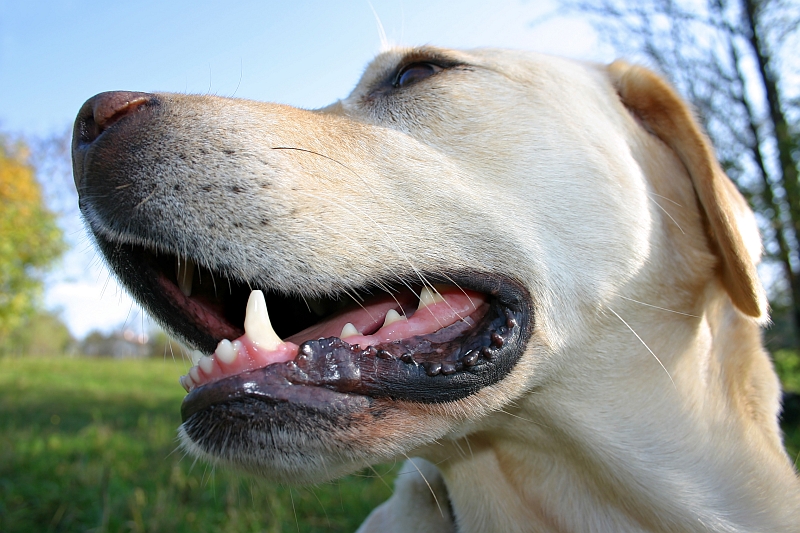Even though modern-day pet dogs have been transformed into omnivores due to the introduction significant number of plant-based ingredients into dog food, they have retained their carnivore’s teeth. Canine teeth, like that of humans, come in a variety of shapes and sizes each of which are meant to accomplish specific tasks. As with humans, dogs acquire two sets of teeth, their deciduous (baby) teeth, and their permanent (adult) teeth. As puppies, dogs do not have molars since they do not have the need to grind much (if any) tough food.
Type of Canine Teeth
Dogs have four types of teeth which help them rip, shred, crush, and pulverize their food, making it ready for consumption. The four types of dog teeth are:
Incisors: The incisors are the smallest of all the teeth and are located I n the front of jaw. The incisors are the most versatile of the teeth, and are used to not only scrap meat off of bones, they are also tools for picking up things off of the ground as well as grooming. Dogs have twelves incisors, six in the upper jaw and six in the lower.
Canines: The canine teeth, the most famous of dog teeth, are used for grabbing, holding onto, and ripping flesh. Dogs have four canine teeth, two on the upper jaw and two on the lower.
Premolars: The premolars are mainly used for chewing and ripping chunks of flesh from bone. Dogs have sixteen premolars—four on each side of the upper and lower jaws, and are located right behind the canine teeth.
Molars: The most substantial of dog teeth, the molars handle the heavy lifting for a dog’s chewing activities, used for such tasks as breaking bones, or dog biscuits. Adult dogs have ten molars, two on each sides of the upper and lower jaws.
Types of Bite
In this case, the ‘bite’ means the way a dog’s upper and lower jaw teeth fit together when the jaw is closed. The most ideal way for a bite is where the upper and lower incisors slightly overlap the lower incisors. Another type of bite is the level bite, which is when the incisors meet straight on. Even though a level bite is not ideal it is generally still an acceptable bite for a dog.
The two problematic bites are where the jaw either is overshot or undershot. A jaw that is overshot is where the upper jaw extends beyond the length of the lower jaw, keeping the teeth apart with a gap even when the mouth is closed. Similarly, an undershot jaw is where the lower jaw is longer than the upper, and results in the same type of problem. There are some breeds (i.e. Bulldogs, Boston Terrier, Boxer), however, that naturally have undershot jaws.
Keeping Dog Teeth Healthy
As with human teeth, dogs require care for their teeth in order to keep them healthy. There are a few options for keeping a dog’s teeth clean, and each has a certain level of effectiveness.
- Professional cleaning at a veterinarian
- Brushing at home with doggy toothbrush and toothpaste
- Dental chews and bones
To keep a dog’s teeth and gums at its most healthy, all three options should be used.

